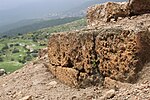On 30 April 2021, at about 00:45 IDT (UTC+3), a deadly crowd crush occurred on Mount Meron, Israel, during the annual pilgrimage to the tomb of Rabbi Shimon bar Yochai on the Jewish holiday of Lag BaOmer, at which it was estimated that 100,000 people were in attendance. Forty-five men and boys at the event were killed, and about 150 were injured, dozens of them critically, making it the deadliest civil disaster in the history of the State of Israel. The crush occurred after celebrants poured out of one section of the mountainside compound, down a passageway with a sloping metal floor wet with spilled drinks, leading to a staircase continuing down. Witnesses say that people tripped and slipped near the top of the stairs. Those behind, unaware of the blockage ahead, continued. The people further down were trampled over, crushed, and asphyxiated by compression, calling out that they could not breathe.
The potential for such a calamity, given the tens of thousands of celebrants, had been reported by the state comptroller and the police chief. The local council had tried several times to close the site. Reuters cited Israeli media outlets in reporting that, as a precaution against the COVID-19 pandemic in the country, bonfire areas had been partitioned off, which may have created unrecognised choke-points. It was later pointed out that the bonfires were not all lit at the same time, as in the past; this allowed people who had seen one lighting go to see another, increasing crowds.
On 10 May 2021, police arrested the safety engineer who approved the Lag BaOmer celebration and his assistant. Investigators said that senior police officers should be questioned, as suspects rather than witnesses. On 27 June, Chief Justice of the Supreme Court of Israel, Esther Hayut, announced that a three-paneled state commission of inquiry would be chaired by her predecessor, former Supreme Court Chief Miriam Naor, with the other two members consisting of former Bnei Brak mayor Rabbi Mordechai Karlitz and Aluf (ret.) Shlomo Yanai. In Israel, such a commission of inquiry has the powers to subpoena witnesses and issue recommendations to the government.











